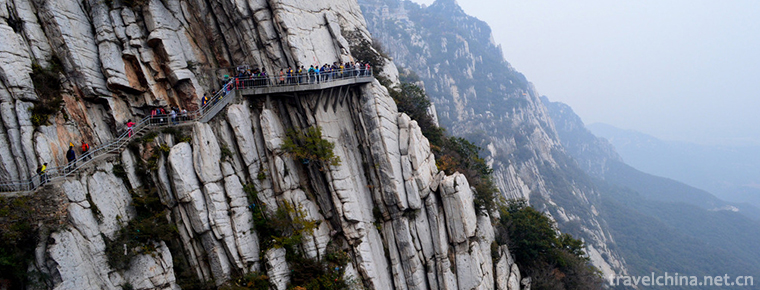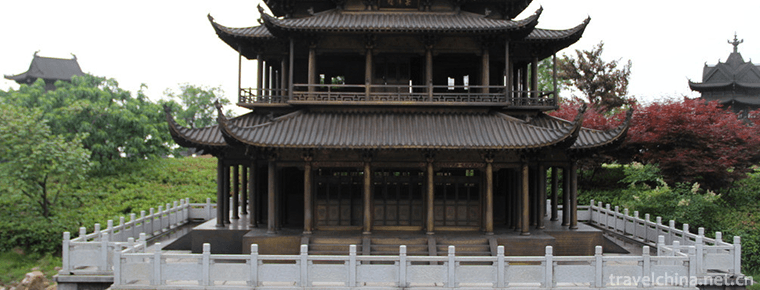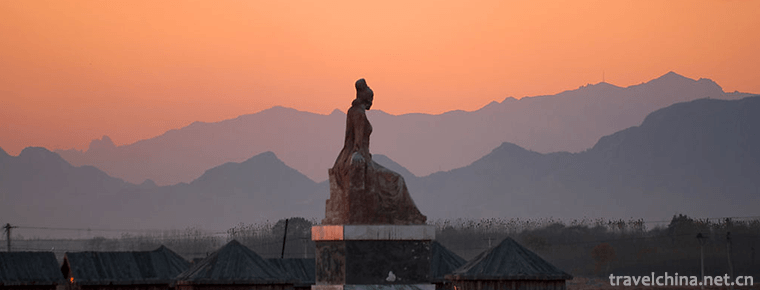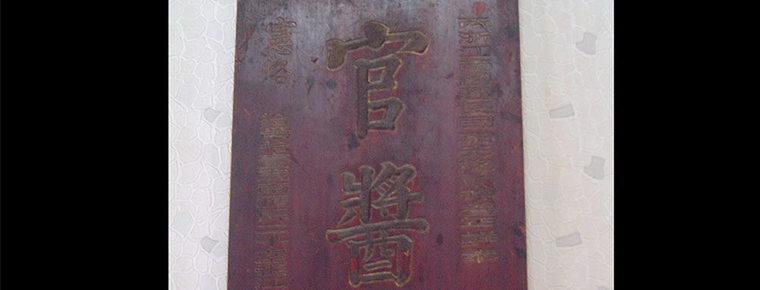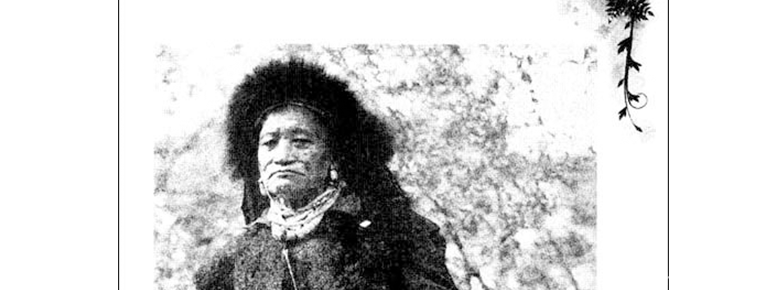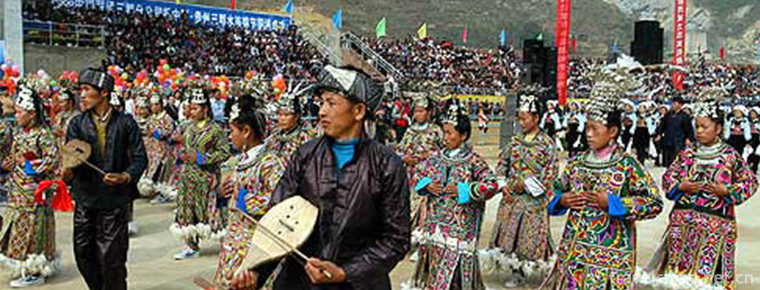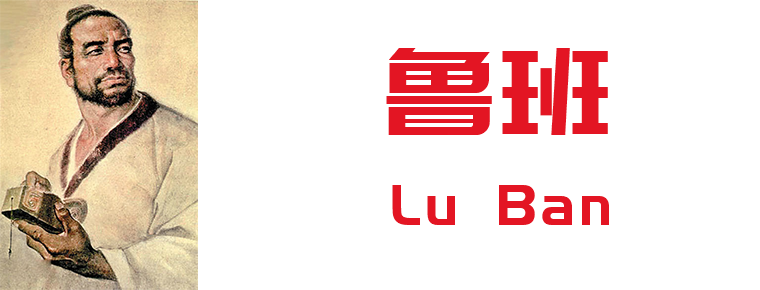Qingshuihe Ming Great Wall Site
Qingshuihe Ming Great Wall Site
The site of the Great Wall of the Ming Dynasty begins at Jiayuguan in Jiayuguan City in the west, passing through Jiuquan, Gaotai, Linze, Zhangye, Shandan, Yongchang, Minqin, Wuwei, Gulang and Jingtai counties, crossing the Yellow River from the Five Buddhist Temple, extending along the southern bank of the Yellow River in Jingyuan County, with ups and downs, all the way to Hushan in Liaoning Province. Gansu is about 1,000 kilometers long, all rammed with loess, and the rammed layer is 13-20 centimeters thick. In some areas, piles, weeds or sand are compacted between layers of compacted soil. It is 10 meters high and has a 1 meter high female wall with a stack. The bottom is 5-6 meters thick and the top width is 2 meters. The beacon tower is close to the inside of the Great Wall. It is 10 meters high and is commonly called the beacon fire pier because of the tamping of loess. The pier spacing is about 5 kilometers, which is very spectacular. Roundabout passes, mountain passes and river estuaries all have lookouts outside the Great Wall.
Basic introduction
The Great Wall of China from the Qin, Han, Sui and Ming dynasties has traces in Ningxia, with a total length of more than 1500 kilometers. Therefore, Ningxia is known as the "Museum of the Great Wall of China". The Ming Dynasty called the Great Wall as a "border city". The main cities in Ningxia are the West Great Wall, the North Great Wall, the East Great Wall and the inner border city of Guyuan, with a total length of more than 400 kilometers. Among them, the Ming Great Wall is located at Sanguankou, more than 40 kilometers west of Yinchuan City.
It is still well preserved. This pass is the junction of Ningxia and Alashan Left Banner in Inner Mongolia. The Yinchuan-Bayanhot Highway passes through and the Great Wall ruins can be seen at the pass. Three passes are from east to west, with the first, second and third passes, which are called three passes by later generations. The mountains here are winding and winding, the terrain is magnificent and precipitous, and in the depression where the two mountains stand side by side, the original pass is built.
When the Great Wall was built, there was more gravel and less soil, so the soldiers cut through the cliffs and valleys and got loam for several places. Because of the lack of water, 100 water trucks were built to fetch water from Pingjibao, which is more than 20 kilometers away from the crossing. They were mixed with loam and gravel and tampered with them. They were very strong. Toudaoguan is 6 km to the west, that is, Erdaoguan. On the south side of Toudaoguan, there is a mountain head more than 20 meters high. On the top of the mountain, there are piers and platforms, which are 11 meters square and about 8 meters high. Sandaoguan is 4 kilometers away from Erdaoguan in the east. The Valley is narrow and water is divided. The mountain is steep and steep. Looking up at the lofty peaks, the valley bottom is steep and the terrain is very dangerous. It has the tendency of "one man should close, ten thousand men should not open". The Great Wall of Stone and the deep ditch were built along the mountain when the Customs was built. The Great Wall, which stretches vertically and horizontally, is connected with piers, beacon towers and so on. There is a real danger of controlling the throat of the desert in the west.
Site introduction
The Great Wall of the Ming Dynasty was well preserved and representative. In order to defend against the invasions of the remaining forces of the Yuan Dynasty and the Tatar and Wa tribes, the Great Wall was built on a large scale on the basis of the Great Wall of the Sui Dynasty. But the Ming Dynasty was not called the Great Wall, but the Side Wall. "Hedong Wall" was built in the eighth year of Chenghua in the Ming Dynasty (AD 1472), also known as "Dongdabian" and "Hengcheng Dabian". One kilometer north of Hengcheng in the west, Huangshazui on the Bank of the Yellow River passes through Shuidonggou, Hongshanbao and Qingshuiying in the east. It passes through Yanchi County to Yanchangbao in Dingbian County, Shaanxi Province. Its total length is about 400 kilometers, with a pier and platform every 150 meters. The Great Wall is three feet high and two feet wide. The top of the wall and the road surface are very wide. It can be used for five horses to go side by side. Soldiers on guard and patrol have been traveling on the top roads of the Great Wall all the year round, and military supplies are also running on the top. In the fifteenth year of Chenghua (1479 A.D.), Zhang Zhenshu, governor of Ningxia, and Wang Xun excavated more than 44000 "Pin" shaped deep pits outside the walls in order to prevent the enemy from riding close to the side wall. The trench is two feet deep and wide in the area of Hongshan Castle, so the Great Wall is also known as the "deep trench fortress". There are 150 castles like this in Ningxia. In ancient times, there were beacon towers in a city of 30 kilometers and a fort of 15 kilometers. Along the main road of traffic or the Great Wall line, a beacon towers were built every certain distance to connect the frontier line with the mainland. Red Mountain Fort is 3 kilometers away from Shuidonggou and covers an area of more than 20 hectares. According to historical records, Red Mountain Fort covers an area of more than 20 hectares. There is a guard in the fort, 235 guards guarding the area, and there is a long way to go to connect with other barracks. Brief introduction of the Great Wall The backbone of the nation is dying out! The Great Wall is in urgent need of protection. It is a treasure of Chinese civilization, one of the world cultural heritages, a building as famous as the Egyptian pyramids, or a miracle of mankind. More than two thousand years ago, it was the working people who built the Great Wall with flesh and blood. The Great Wall is the crystallization of the wisdom of the ancient Chinese people and the symbol of the Chinese nation. During the Spring and Autumn Period and the Warring States Period, in order to defend against foreign invasion, the princes of various countries built beacon towers and connected them with city walls to form the earliest Great Wall. Almost all the emperors of the past dynasties have strengthened and built the Great Wall. Because it is tens of thousands of miles long, it is also called the Great Wall. According to records, Qin Shihuang used nearly a million laborers to build the Great Wall, accounting for one-twentieth of the country's population. At that time, there was no machinery, all the work was done by manpower, and the working environment was steep mountains and deep cliffs, which was very difficult. The Great Wall starts from Shanhaiguan in the east, Jiayuguan in Gansu in the West and Yalu River in the east. It travels from east to west through 10 provinces, districts and municipalities. The total length of the Great Wall is 8851800 meters, of which the length of artificial wall is 6254239.662 meters, and the length of trench and natural formation is 2594342.265 meters. The Great Wall was built in the Spring and Autumn Period and the Warring States Period. It lasted more than 2000 years and its total length was over 532,000 meters. The Great Wall we refer to today mostly refers to the Great Wall built in the Ming Dynasty. It starts at Jiayuguan Pass in Gansu Province in Western China and goes east to the Yalu River in Liaoning Province in northeastern China. It is 6.35 million meters long. It is like a vigorous dragon, crossing mountains, menopausal walls, across grasslands, across deserts, ups and downs on the top of mountains, the other side of the Yellow River and the coast of the Bohai Sea. Ancient, modern, Chinese and foreign people who have visited the Great Wall all marvel at its magnificent momentum, magnificent scale and arduous projects. The Great Wall is a rare treasure and an artistic monument. It symbolizes the will and strength of the Chinese nation, the pride of the Chinese nation and the pride of the whole human race. In 1987, the Great Wall was listed in the World Heritage List (No. 200-001) according to the criterion C (I) (II) (III) (IV) (VI) for selecting cultural heritage. World Heritage Committee Assessment Relevant Pictures

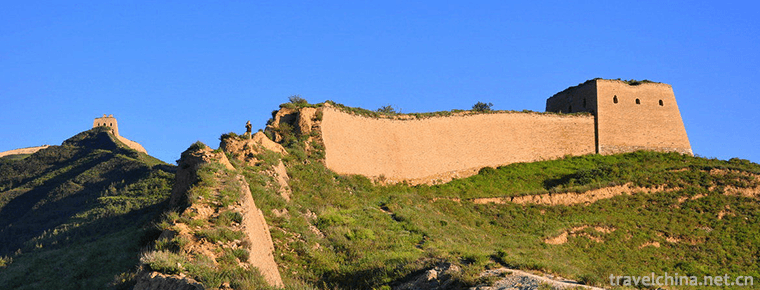
-
Mount Song
Songshan, known as the "foreign side" in ancient times, Xia and Shang Dynasties as "lofty" and "Chongshan", Western Zhou Dynasty as "Yue Shan", Songshan as the .
Views: 187 Time 2018-10-30 -
Yueyang Tower and Junshan Island Scenic Area
Junshan Island, formerly known as Dongting Mountain, Xiangshan Mountain and Youyuan Mountain, is located in the territory of Yueyang City. It is an island in Dongting Lake, 800 li away from Yueyang To.
Views: 139 Time 2018-12-12 -
Legend of Meng Jiangnu
Meng Jiangnu's story, as one of the four love legends in ancient China (the other three are Niulang and Zhinu, Liang Shanbo and Zhu Yingtai, and The Legend of White Snake), has been widely circulated .
Views: 266 Time 2018-12-23 -
Brewing technology of soy sauce
Qian Wanlong soy sauce brewing technology is the traditional soy sauce brewing technology of Shanghai Bengang, and it is an ancient local traditional handicraft technology. .
Views: 80 Time 2019-05-06 -
Legend of the Ancestors of the Loba Nationality
The legend of the ancestors of the Loba nationality is an organic part of the life of the Loba people, a mirror of the Loba society and a way of existence of the folk life of the Loba people..
Views: 102 Time 2019-05-15 -
Nu Dabian Dance
"Dabian Dance" is one of the representative dances of the Nu nationality, which is spread in the Nujiang Lisu Autonomous Prefecture Fugong County Nu villages. Dabian dance is characterized b.
Views: 126 Time 2019-06-08 -
Shuizu Duanwu Jie
The aquarium duanjie is called "borrowing duanjie" in the language of water. "Duan" means "the first year of life" or "New Year", "borrow" means ".
Views: 165 Time 2019-06-16 -
Forging Skill of Iron Painting in Wuhu
Iron painting originated in the Song Dynasty and prevailed in the Northern Song Dynasty. During the reign of Kangxi in the Qing Dynasty, iron paintings in Wuhu, Anhui Province, became self-contained a.
Views: 132 Time 2019-06-29 -
Zhou Cuns Baking Cake Making Skills
Zhou Cun's baking technology has a history of more than 1,800 years. According to Zizhi Tongjian, in the three years since Emperor Heng of Han Dynasty Yanxi, Hucai vendors have been exiled in Shandong.
Views: 290 Time 2019-08-10 -
Gong Shuban Lu Ban
Luban (507 BC - 444 BC), Lu people in the spring and Autumn period. Ji surname , a two-character surname Name, class, person. Public transport plate , Public like , Class lose It is also known as &quo.
Views: 184 Time 2019-09-07 -
Cultural undertakings in Panzhihua
As of the end of 2018, Panzhihua has 3 museums and exhibition halls; 50 cultural (Art) museums, including 44 cultural stations and 8 theatres and cinemas; and 6 public libraries, with a total collection of 990800 books. There are 43 Township radio and television stations and.
Views: 246 Time 2020-12-14 -
Neijiang traffic
Neijiang has convenient transportation, which is one of the main national highway transportation hubs planned by the Ministry of transport, the second largest transportation hub in Sichuan Province and an important intersection point of Southwest land.
Views: 295 Time 2020-12-16
